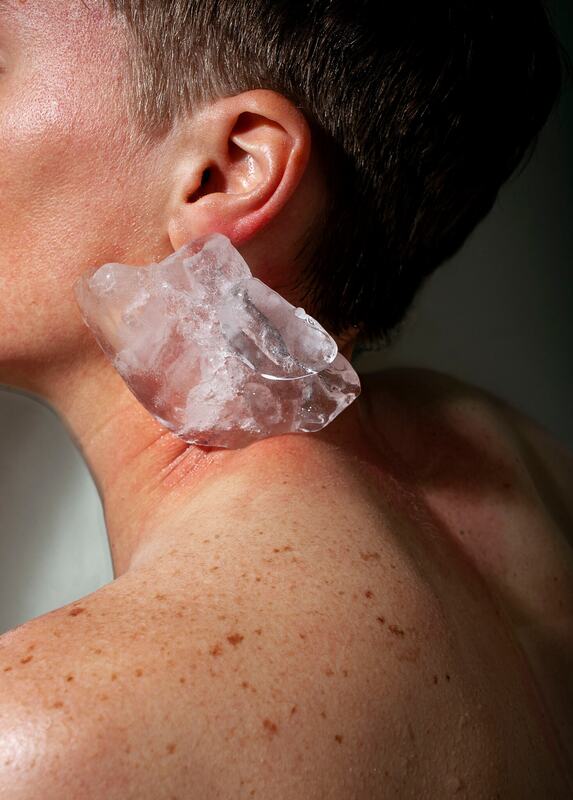|
After performing a vigorous workout or incurring a sports injury, many of us still rely on ice packs to reduce soreness and swelling of our muscles. But a new animal study finds that icing actually alters the molecular environment inside our injured muscles by slowing down our natural healing process. The study adds to mounting evidence that icing muscles after strenuous exercise is not just ineffective but counterproductive.
Most gyms, locker rooms or athletes’ freezers will have ice pack, they are routinely used on aching limbs after grueling exercise and injuries. The rationale for the use of ice is obvious, is that it numbs the affected area, dulling pain, and keeps swelling and inflammation at bay, which many athletes believe helps their aching muscles heal more rapidly. But, in recent years, exercise scientists have found evidence that contra indicates the supposed benefits of icing. In a 2011 study, for example, people who iced a torn calf muscle felt just as much leg pain later as those who left their sore leg alone, and they were unable to return to work or other activities any sooner. Similarly, a 2012 scientific review concluded that athletes who iced sore muscles after strenuous exercise — those who immersed themselves in ice baths — regained muscular strength and power more slowly than their unchilled teammates. And a sobering 2015 study of weight training found that men who regularly applied ice packs after workouts developed less muscular strength, size and endurance than those who recovered without ice. But little has been known about how icing really affects sore, damaged muscles at a microscopic level. What happens deep within those tissues when we ice them, and how do any molecular changes there affect and possibly impede the muscles’ recovery? A new study, published in March in the Journal of Applied Physiology, researchers at Kobe University in Japan gathered 40 young, healthy, male MICE. Then, using electrical stimulation of the animals’ lower legs to contract their calf muscles repeatedly, they simulated, a muscle-ripping leg day at the gym. Rodents’ muscles, like ours, are made up of fibers that stretch and contract with any movement. Overload those fibers during unfamiliar or exceptionally strenuous activities and you damage them. After healing, the affected muscles and their fibers should grow stronger. They gathered muscle samples from some animals immediately after their simulated exertions and then strapped tiny ice packs onto the legs of about half of the mice, while leaving the rest unchilled. The scientists continued to collect muscle samples from members of both groups of mice every few hours and then days after their pseudo-workout, for the next two weeks. Then they microscopically scrutinized all of the tissues, with a particular focus on what might be going on with inflammatory cells. As most of us know, inflammation is the body’s first response to any infection or injury, with pro-inflammatory immune cells rushing to the afflicted area, where they fight off invading germs or mop up damaged bits of tissue and cellular debris. Anti-inflammatory cells then move in, quieting the inflammatory ruction, and encouraging healthy new tissue to form. But inflammation is often accompanied by pain and swelling, which many people understandably dislike and use ice to dampen. Looking at the mouse leg muscles, the researchers saw clear evidence of damage to many of the muscles’ fibers. They also noted, in the tissue that had not been iced, a rapid muster of pro-inflammatory cells. Within hours, these cells began busily removing cellular debris, until, by the third day after the contractions, most of the damaged fibers had been cleared away. At that point, anti-inflammatory cells showed up, together with specialized muscle cells that rebuild tissue, and by the end of two weeks, these muscles appeared fully healed. Not so in the iced muscle, where recovery seemed markedly delayed. It took seven days in these tissues to reach the same levels of pro-inflammatory cells as on day three in the unchilled muscle, with both the clearance of debris and arrival of anti-inflammatory cells similarly slowed. Even after two weeks, these muscles showed lingering molecular signs of tissue damage and incomplete healing. The upshot of this data is that “in our experimental situation, icing retards healthy inflammatory responses,” says Takamitsu Arakawa, a professor of medicine at Kobe University Graduate School of Health Sciences, who oversaw the new study. But, as Dr. Arakawa points out, their experimental model simulates serious muscle damage, such as a strain or tear, and not simple soreness or fatigue. The study also, obviously, involved mice, which are not people, even if our muscles share a similar makeup. In future studies, Dr. Arakawa and his colleagues plan to study gentler muscle damage in animals and people. But for now, his study’s findings suggest, he says, that damaged, aching muscles know how to heal themselves and our best response is to chill out and leave the ice packs in the cooler. Icing after eccentric contraction-induced muscle damage perturbs the disappearance of necrotic muscle fibers and phenotypic dynamics of macrophages in miceMasato Kawashima , Noriaki Kawanishi , Takaki Tominaga , Katsuhiko Suzuki 07 MAY 2021https://doi.org/10.1152/japplphysiol.01069.2020
0 Comments
|
AuthorFull Spectrum of Writers! Archives
April 2024
Categories |

 RSS Feed
RSS Feed